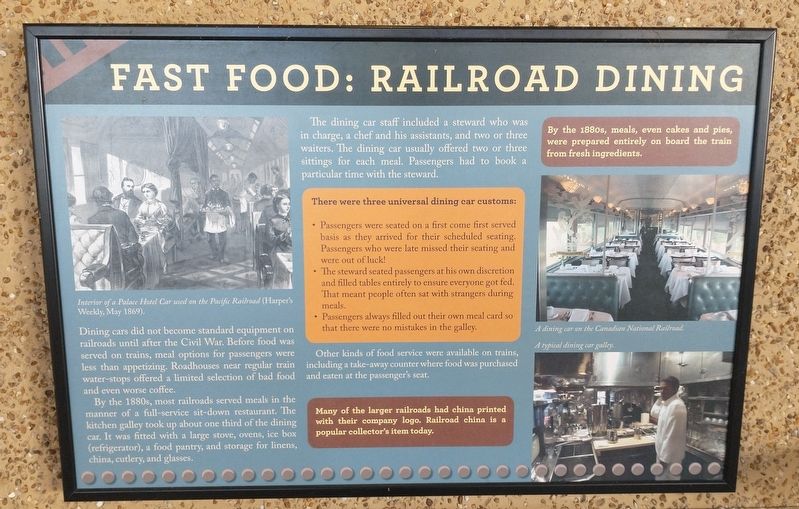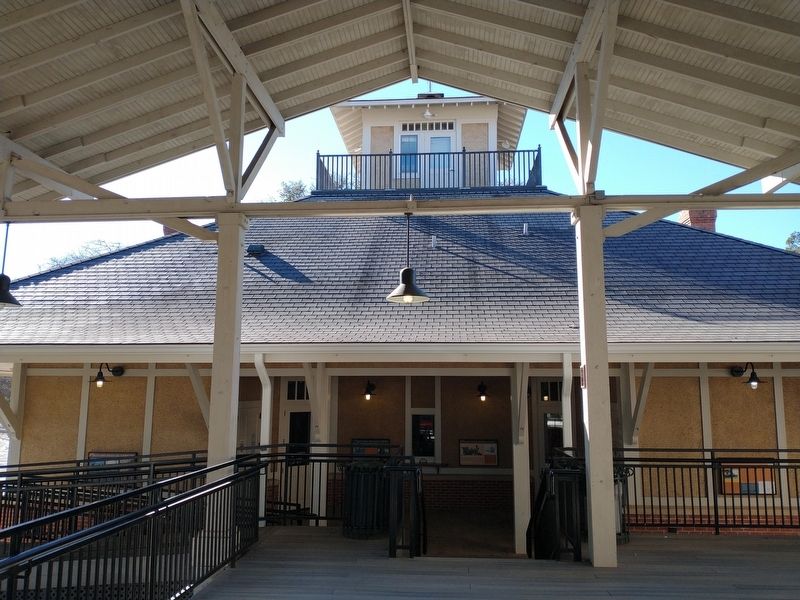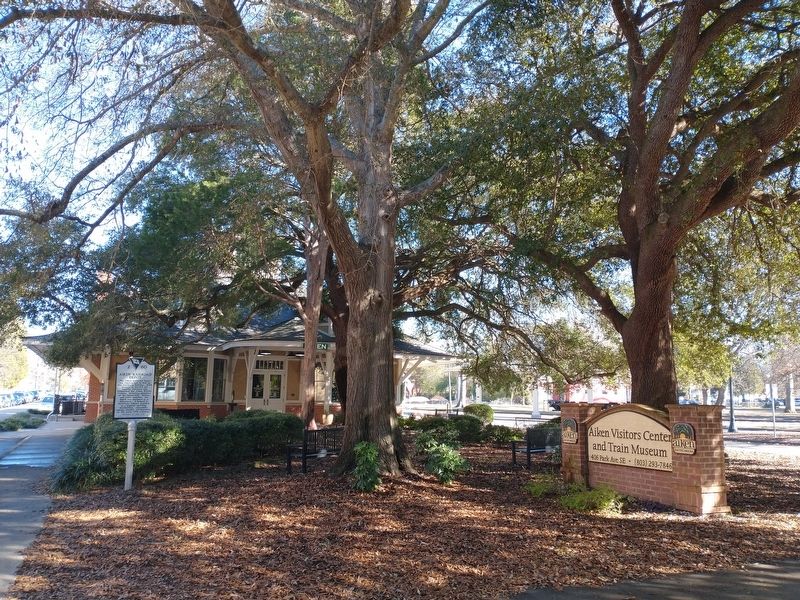Aiken in Aiken County, South Carolina — The American South (South Atlantic)
Fast Food: Railroad Dining
By the 1880s, most railroads served meals in the manner of a full-service sit-down restaurant. The kitchen galley took up about one third of the dining car. It was fitted with a large stove, ovens, ice box (refrigerator), a food pantry, and storage for linens, china, cutlery, and glasses.
The dining car staff included a steward who was in charge, a chef and his assistants, and two or three waiters. The dining car usually offered two or three sittings for each meal. Passengers had to book a particular time with e steward.
There were three universal dining car customs:
• Passengers were seated on a first come first serve basis as they arrived for their scheduled seating. Passengers who were late missed their seating and were out of luck!
• The steward seated passengers at his own discretion and filled tables entirely to ensure everyone got fed. That meant people often sat with strangers during meals.
• Passengers always filled out their own meal card so that there was no mistakes in the galley.
Other kinds of food service were available on trains, including a take-away counter where food was purchased and eaten at the passenger’s seat.
Many of the larger railroads had china printed with their company logo. Railroad china is a popular collector’s item today.
By the 1880s, meals, even cakes and pies, were prepared entirely on board the train from fresh ingredients.
(captions)
Interior of a Palace Hotel Car used on the Pacific Railroad (Harper’s Weekly, May 1869).
A dining car on the Canadian National Railroad.
A typical dining car galley.
Topics. This historical marker is listed in this topic list: Railroads & Streetcars.
Location. 33° 33.486′ N, 81° 42.94′ W. Marker is in Aiken, South Carolina, in Aiken County. Marker can be reached from Union Street SE north of Sea Lane SE, on the left when traveling south. Mounted on the north wall of the Aiken Visitors Center and Train Museum. Touch for map. Marker is at or near this postal address: 406 Park Ave SE, Aiken SC 29801, United States of America. Touch for directions.
Other nearby markers. At least 8 other markers are within walking distance of this marker. How a Steam Engine Works (here, next to this marker); Bells and Whistles: Signaling (here, next to this marker); City of Aiken: A Glimpse Into Our Past (a few steps from this marker); Aiken Railroad Depot (within
shouting distance of this marker); Friendship Baptist Church (about 600 feet away, measured in a direct line); Friendship (African) Baptist Church (about 700 feet away); Aiken County 125th Anniversary (approx. 0.2 miles away); Aiken County Confederate Monument (approx. 0.2 miles away). Touch for a list and map of all markers in Aiken.
Related markers. Click here for a list of markers that are related to this marker.
Credits. This page was last revised on January 7, 2024. It was originally submitted on January 4, 2024, by Tom Bosse of Jefferson City, Tennessee. This page has been viewed 48 times since then. Photos: 1, 2, 3. submitted on January 4, 2024, by Tom Bosse of Jefferson City, Tennessee. • Bernard Fisher was the editor who published this page.


